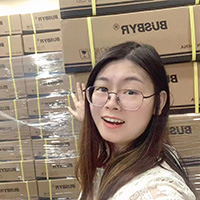News
The string inverter is based on the concept of modularization. Each photovoltaic string passes through an inverter, which has maximum power peak tracking at the DC end and is connected in parallel to the grid at the AC end. Due to its long power generation time, low operation and maintenance costs, and high cost performance, it has become the inverter type with the largest market share.
According to different grid access, string inverters can be divided into 220V single-phase string inverters and 380V three-phase string inverters. The single-phase string inverter is connected to the 220V single-phase grid, and the common power is 1~8KW. For the power inverter of 3kw and below, only one string of components is connected, and only one MPPT is connected; for the inverter above 3kw, it is usually connected to two String components, equipped with 2-way MPPT, the maximum input voltage is usually 600V or 630V. The three-phase string inverter is connected to the 380V three-phase grid, the common power is 4~60KW, the number of MPPT is generally 2-4, the maximum input voltage is usually 1000V, and some manufacturers adjust the maximum input voltage to 1500V.
Single Phase String Inverter
Single-phase string inverter is composed of DC-DC circuit, DC-AC circuit, BOOST boost circuit, protection circuit, filter circuit, current detection circuit, etc. This circuit needs to use sensors, safety capacitors, film capacitors, Boost inductor, IGBT, current sensing IC, etc.
Three-phase string inverter
Three-phase electricity is composed of three alternating potentials with the same frequency, equal amplitude, and a phase difference of 120°. The converted voltage of the three-phase inverter is 380V alternating current. The three-phase and single-phase string inverters The difference is mainly the difference in the topology of the main circuit. The single-phase inverter is an H-bridge inverter composed of four tubes, and the three-phase inverter is a three-phase full-bridge inverter composed of six tubes. Because it has a higher output voltage, it can drive more electrical appliances than a single-phase inverter, and is often used in industries and enterprises. The circuit includes EMC circuit, boost circuit, inverter circuit, protection circuit and so on. Photovoltaic inverters are one of the products with the fastest technological updates and iterations in the photovoltaic power generation industry, and their conversion efficiency and reliability will greatly affect the operating efficiency of photovoltaic power generation systems. As my country's photovoltaic installed capacity continues to expand, power generation efficiency and convenience of maintenance will become important considerations in the construction of power stations. String inverters are mature in technology, easy to maintain, and widely used, and will be more and more favored by the market!


